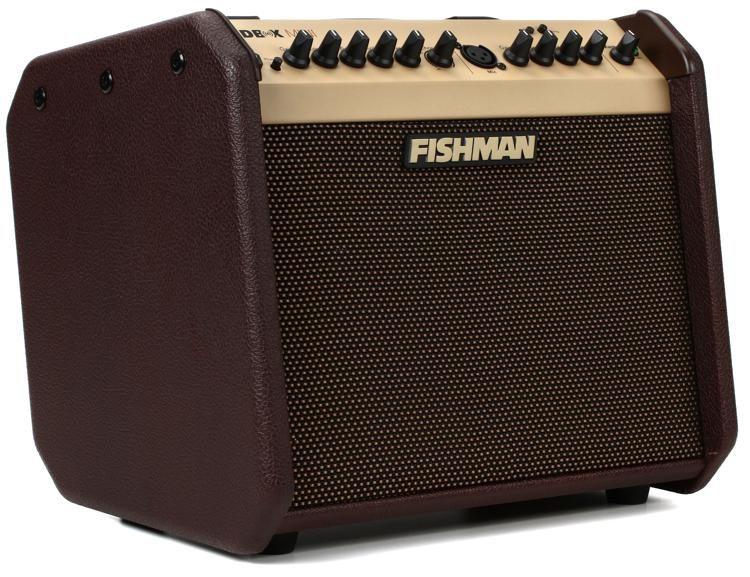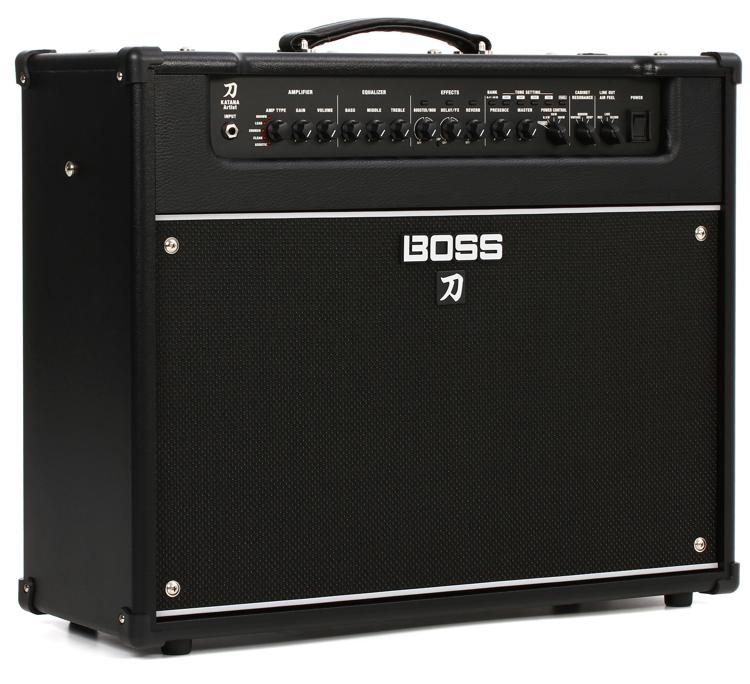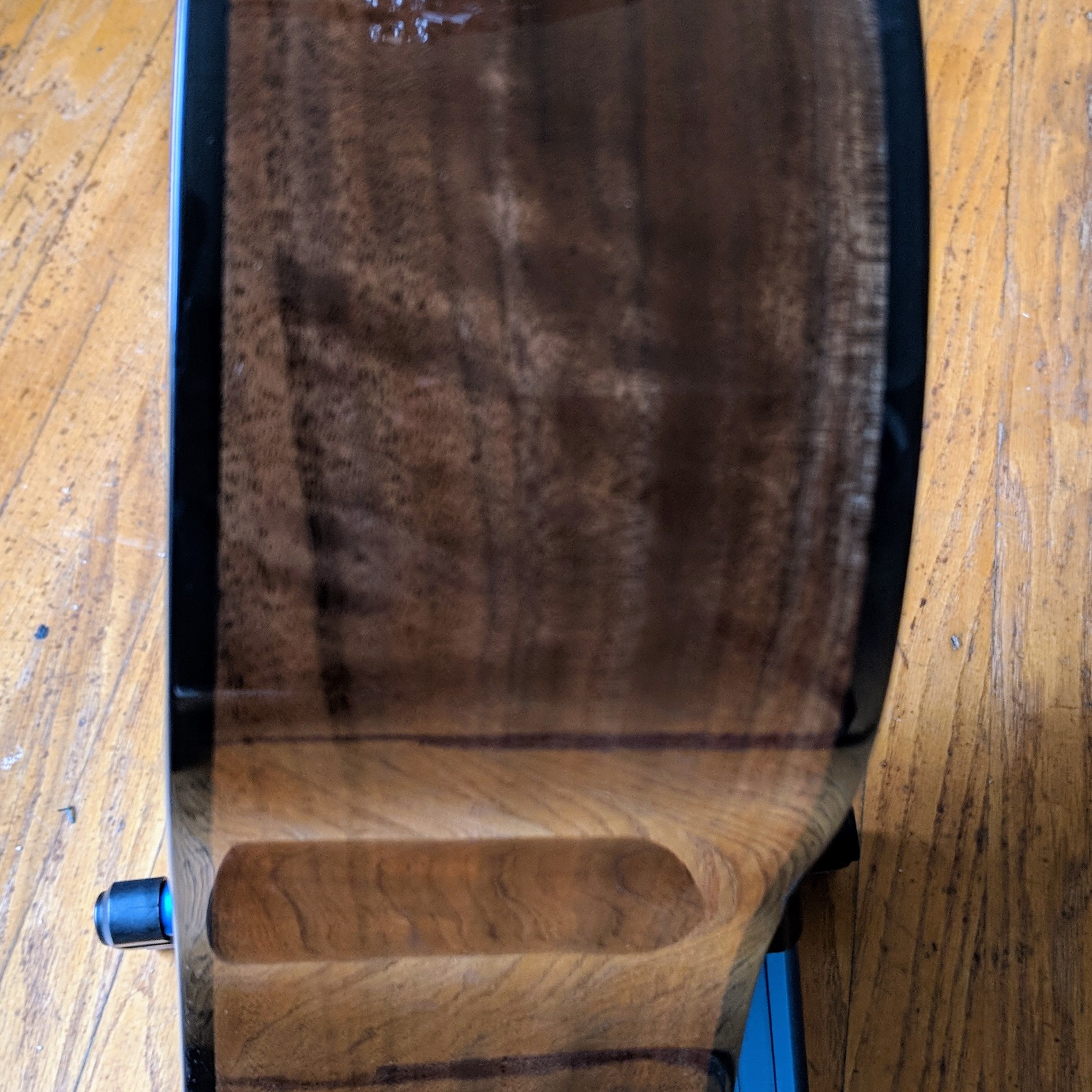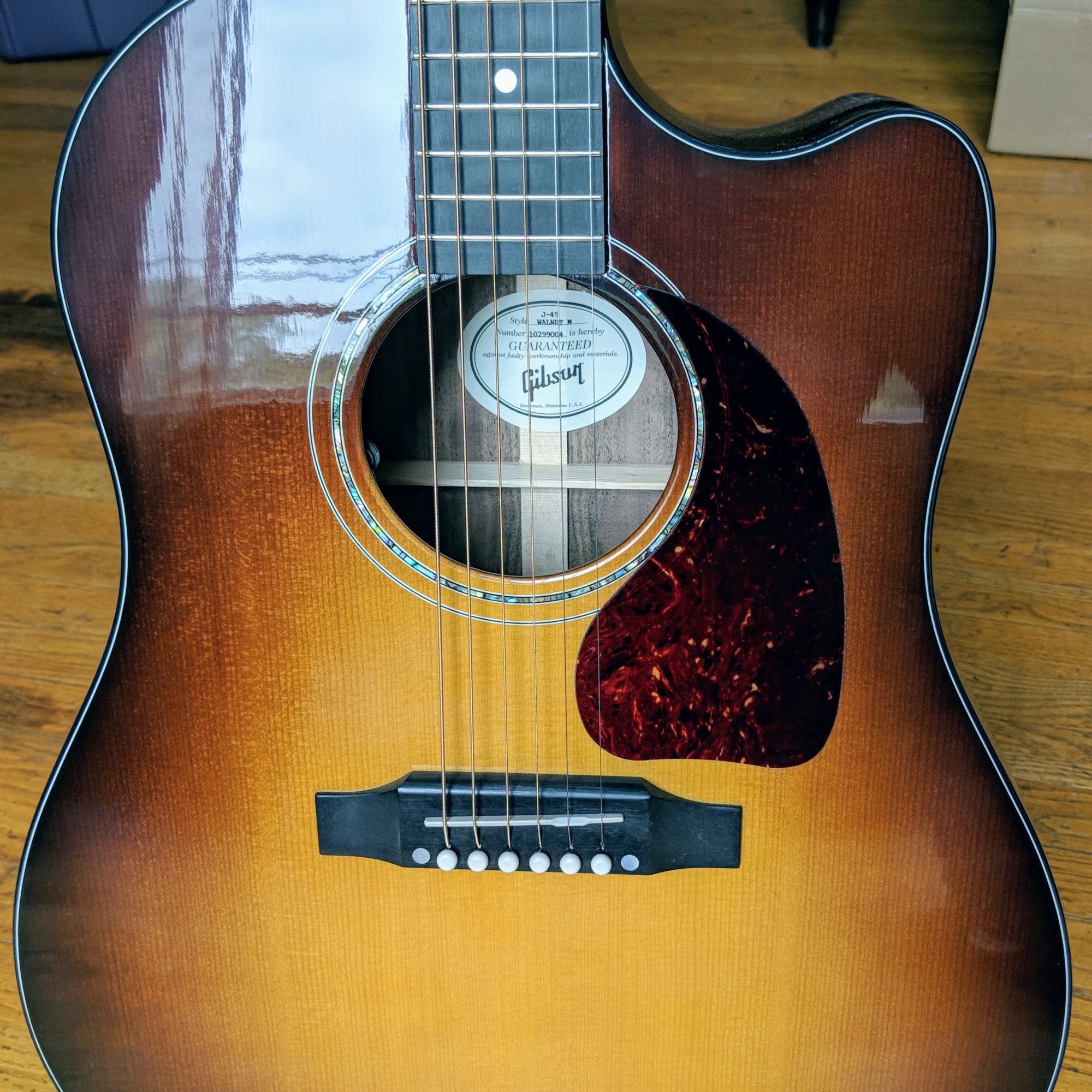
Now that I’ve rejoined my old farts classic rock band, I’ve started getting regular GAS attacks again. Damn! But I’ve gotten wiser about gear over the years and manage to resist my natural compulsions to get gear. That said, having not played out in a while, my gear has been showing its age. And let’s be honest at 60 years old, so am I. And approaching that senior citizen age of my life, I’m just no longer willing to lug around heavy gear. When I got my Tone Master Deluxe Reverb, weight was a huge factor in my decision besides freakin’ awesome tone.
And so it goes with my acoustic amp. One of the great things about rejoining my band is that I’m no longer the only lead guitarist. I switch off solos with the other guitarist, and quite frankly, he plays way more solos than I do – I admit it – simply because he’s better than me. But this means that I also have some freedom to not just play electric. I can play my acoustic as well, and that totally pleases me!
To that end, adding that dimension to our sound comes with its own challenges, not the least of which is the fact that my only really good acoustic amp is a 1981 SRS California Blonde II. It is a sensational amp. But it weighs 75 lbs! That was not going to work for me. So I went on a search for a compact acoustic amp that I could use both as a reference monitor while I’m onstage and one that I could plug into our board.
I was all set to get an AER, but decided to take a look at other amps and came across the Fishman Loudbox Mini. After watching and reading some reviews online, I saw that my local GuitarCenter had one in stock. So I drove down there and tried it out and half an hour later, walked out of the store with one.
Thus far, I’ve played it at my weekly church service, using it as a reference monitor and running the DI into the church’s PA. It sounded great through the PA, and I actually ran the EQ flat out of the mixer as the tone was nice and rich. I also played it at band rehearsal last night to see if I should add an acoustic guitar to our sound. There was unanimous agreement that this will provide a great contrast to our sound. I’m SO jazzed to be using it in this coming Friday’s gig!
From a usability perspective, the amp is straightforward as can be! The EQ is incredibly responsive but not so sensitive that I have to make micro-adjustments to the different levels. The built-in hall reverb is generally good, though I tend to keep it at very subtle levels (I’ll explain below). The chorus is actually very nice, and at lower levels adds a little tonal grease to the overall sound. I dig it!
Circling back to the reverb, the reason I keep it low is that at volume, there’s a certain depth and richness to the sound that I feel reverb would only muddy. The whole purpose of reverb is to provide depth. But the way the sound is projected from the amp, I feel that I just don’t need more depth. It’s actually a little uncanny and totally unexpected, and you only get it at performance volumes. At low volumes, the amp is like any amp – very directional. But when you up the volume, the sound takes on a 3-dimensional quality!
Overall, this was a great purchase! And at $369, it has a sound that rivals amps that are 3-4 times more expensive. No, it’s not an AER. But it’s not trying to be. This is a great workhorse amp that I just know I’m going to get a lot of mileage!










 Wow… That’s usually first – and only – thing I can say when having a visceral reaction to an experience. And a visceral experience was exactly what happened when I finally got my guitar set up for last night’s gig. After I played the first song, I had to pause for several seconds soaking in the tones that the combination of my Simon & Patrick PRO guitar and the Duncan MagMic produced. I already had a good idea of the dynamics of the pickup and how well it worked with my guitar, having had a few days before my gig to record with it. But until I actually gigged with it, I really didn’t know how it would perform in a live situation; especially in a room with a 25-30-foot vaulted ceiling.
Wow… That’s usually first – and only – thing I can say when having a visceral reaction to an experience. And a visceral experience was exactly what happened when I finally got my guitar set up for last night’s gig. After I played the first song, I had to pause for several seconds soaking in the tones that the combination of my Simon & Patrick PRO guitar and the Duncan MagMic produced. I already had a good idea of the dynamics of the pickup and how well it worked with my guitar, having had a few days before my gig to record with it. But until I actually gigged with it, I really didn’t know how it would perform in a live situation; especially in a room with a 25-30-foot vaulted ceiling.


